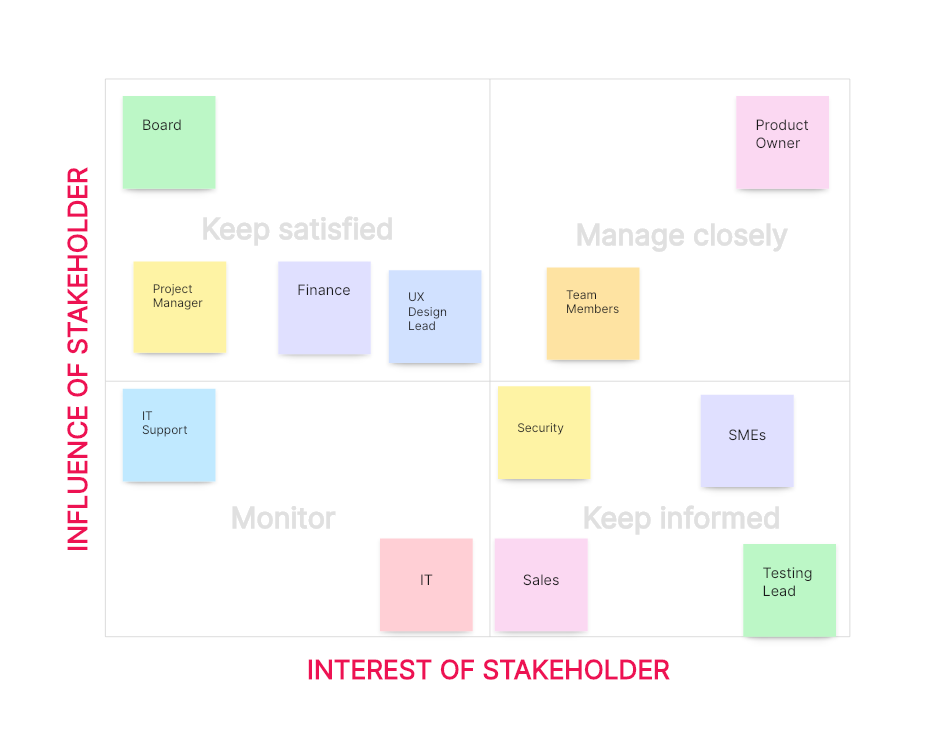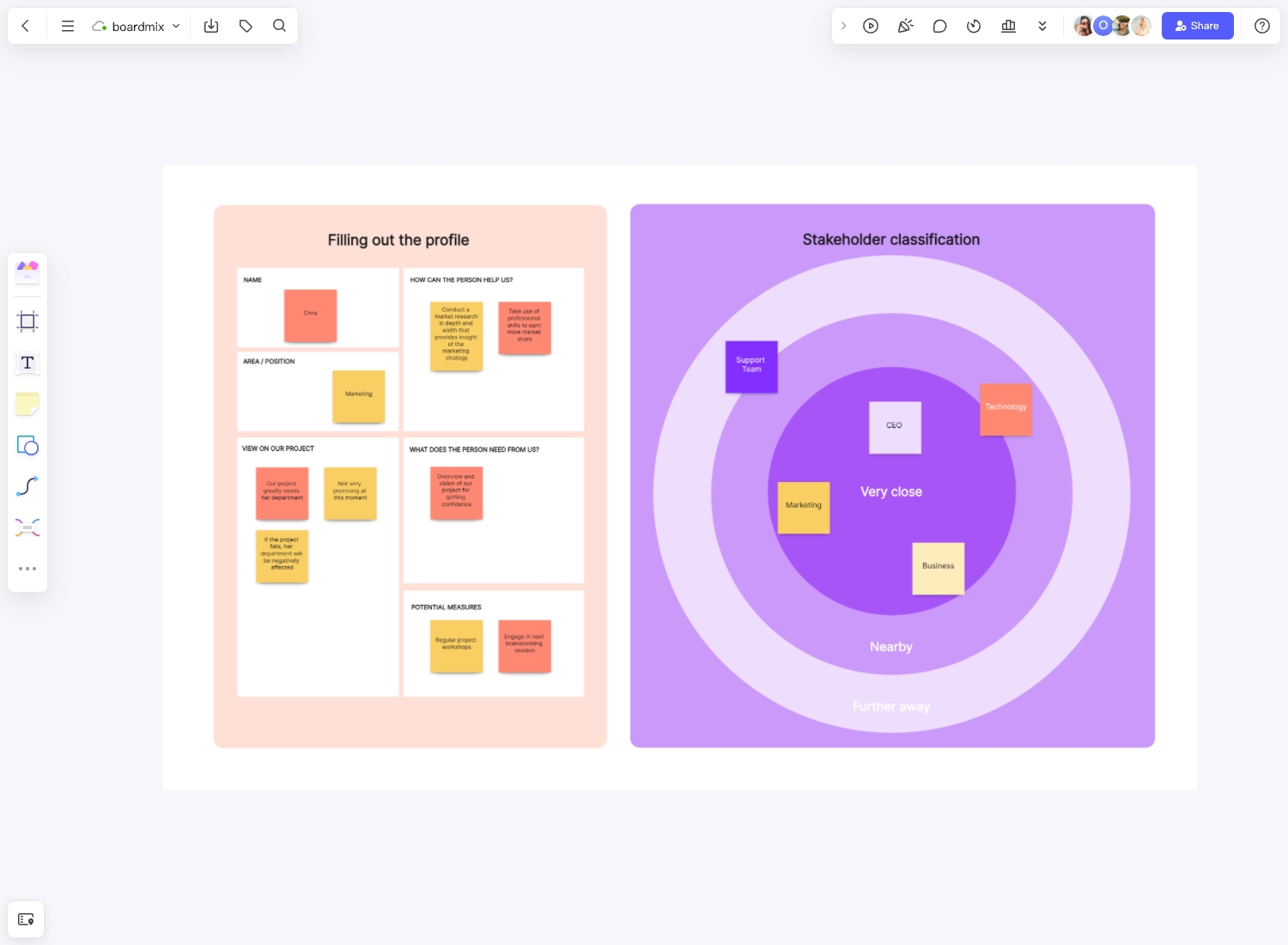In the business realm, every decision-maker ought to acknowledge the significance of stakeholders. Stakeholders wield enormous power and their interests and influence matter the most. One effective tool that guides in analyzing stakeholder interest and influence is Mendelow's Matrix. Mendelow's Matrix has gained recognition as a strategic instrument for stakeholder mapping, providing invaluable insights for both start-ups and established corporations.

What is the Mendelow's Matrix?
Mendelow's Matrix is an analytical tool developed by academic and corporate strategy advisor, Aubrey L. Mendelow. This tool facilitates businesses in identifying the potential influence and interest of stakeholders, enabling decision-makers to allocate resources optimally, communicate effectively, and make strategic decisions that satisfy diverse stakeholder groups.
Mendelow’s Matrix underscores that not all stakeholders are created equal. They have different interests in the organization and varying degrees of influence over it. The matrix enables businesses to map stakeholders into four quadrants based on their level of interest and influence: Low Interest-Low Influence, High Interest-Low Influence, Low Interest-High Influence, and High Interest-High Influence.
What are the Four Categories of Mendelow's Matrix?
The quadrants of Mendelow’s Matrix are fundamentally distinguished by stakeholder interests and influences. Each quadrant prompts a specific strategy for stakeholder management. Here are the four categories:
- Low Interest-Low Influence (Category A): This category houses stakeholders with minimal interest in the business's activities and possesses little influence over its decision-making process. They require minimal attention from the organization.
- High Interest-Low Influence (Category B): Stakeholders in this category have a high interest in the company's activities but have limited power to influence decisions. Frequent communication is necessary to keep them satisfied.
- Low Interest-High Influence (Category C): These stakeholders possess considerable power over business decisions but lack substantial interest. Occasional engagement is required to ensure they use their influence positively when necessary.
- High Interest-High Influence (Category D): These stakeholders have significant interest and wield extensive influence on business decisions. They should be prioritized, engaged closely, and satisfied continually by the organization.
Benefits of Using the Mendelow's Matrix
Employing Mendelow's Matrix into your business strategy brings about a multitude of benefits that not only optimize the stakeholder management process but also enhance your business growth and sustainability. Here are the key advantages of leveraging this effective tool:
- Identifying Key Players: By classifying stakeholders based on their interests and influences, Mendelow's Matrix helps you discover the key players in your organization - those with high influence and high interest. Their support is pivotal for the success of your initiatives and projects. Thus, understanding their stance enables you to strategize your actions and decisions in a way that garners their backing.
- Shaping Communication Strategies: Different stakeholders require varying communication approaches. Stakeholders with high interest need to be kept well-informed and involved, even though they might have low influence. The matrix assists you in tailoring personalized communication strategies, thus keeping stakeholders satisfied and fostering stronger relationships.
- Resource Allocation: Time and resources are limited; hence they should be optimally allocated. The matrix guides in prioritizing stakeholders to whom more resources should be dedicated, ensuring their satisfaction and positive influence over business decisions. It saves effort from being squandered on low-interest and low-influence stakeholders.
- Anticipating Reactions: Business decisions often bring about change, leading to resistance among stakeholders. By using Mendelow’s Matrix, you can predict potential stakeholder reactions to your decisions. This insight allows you to address any negative reactions preemptively and pave the way for smoother change implementation.
- Strategic Planning: As you map out your stakeholders using Mendelow's Matrix, you also uncover potential risks and opportunities that lie ahead. Knowing which stakeholders might pose threats or provide advantages equips you with strategic insights for more effective business planning and risk management.
How to Use the Mendelow's Matrix
Mendelow’s Matrix, while sophisticated in its insights, is relatively straightforward to implement in your business. Here’s a step-by-step guide on how you can effectively apply this strategic tool:
- Identify Stakeholders: Begin by listing out all the potential stakeholders that interact with your organization. These could include customers, employees, suppliers, shareholders, government bodies, competitors, or any other group with a vested interest or influence on your business operations.
- Rate Stakeholders: The next step involves evaluating each stakeholder based on their level of interest and influence over your business. Remember that interest refers to the degree to which stakeholders are affected by your decisions, while influence measures the extent to which they can shape these decisions. Each stakeholder should be assigned a score on a scale - typically from low to high - for both parameters.
- Plot Stakeholders: Now that you have classified your stakeholders based on interest and influence, position them in the corresponding quadrants of Mendelow's Matrix. Be aware that a stakeholder’s position may shift over time as their level of interest or influence changes.
- Develop Strategies: The final step involves formulating effective management strategies for each stakeholder group. Those with high interest and high influence should be actively managed and closely involved in decision-making processes. Stakeholders with high interest but low influence require regular updates and reassurance. Conversely, those with low interest but high influence should be kept satisfied but not overwhelmed with information. Finally, stakeholders with low interest and low influence require minimal attention.
Tools to Make the Mendelow's Matrix
Constructing Mendelow's Matrix can be made seamless with digital tools. Among such, one highly recommended tool is Boardmix - an intuitive online whiteboard and diagram maker. With Boardmix, you can create professional Mendelow's Matrices, engage in real-time collaboration, save time with pre-made templates, and make strategic decisions efficiently.

In a nutshell, Mendelow's Matrix is a compelling tool that aids in optimizing stakeholder management, a critical success factor in business. By utilizing it diligently, companies can harness the power of stakeholders, paving the way for corporate growth and prosperity.













